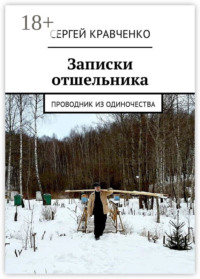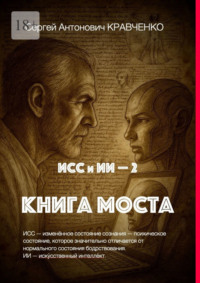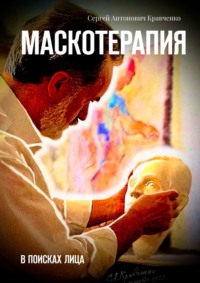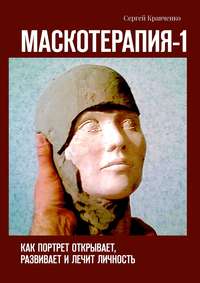
Полная версия
Предвосхищение. Том 2. Словарь с комментариями
2. Barbour, J. (2001). The end of time: The next revolution in physics (Paperback ed.). New York: Oxford University Press.
3. Bargh, J. A., & Ferguson, M. J. (2000). Beyond behaviorism: On the automaticity of higher
mental processes. Psychological Bulletin, 126, 925—945.
4. Bem, D. J. (2003, August). Precognitive habituation: Replicable evidence for a process of
anomalous cognition. Paper presented at the meeting of the Parapsychological Association, Vancouver, British Columbia, Canada.
5. Bem, D. J., & Honorton, C. (1994). Does psi exist? Replicable evidence for an anomalous
process of information transfer. Psychological Bulletin, 115, 4—18.
6. Bierman, D. J., & Scholte, H. S. (2002, August). Anomalous anticipatory brain activation preceding exposure of emotional and neutral pictures. Paper presented at the meeting of the Parapsychological Association, Paris, France.
7. Bornstein, R. F. (1989). Exposure and affect: Overview and meta-analysis of research, 1968—1987. Psychological Bulletin, 106, 265—289.
8. Bornstein, R. F., Kale, A. R., & Cornell, K. R. (1990). Boredom as a limiting condition on the
mere exposure effect. Journal of Personality and Social Psychology, 58, 791—800.
9. Bousfield, W. A. (1953). The occurrence of clustering in the recall of randomly arranged
associates. Journal of General Psychology, 49, 229—240.
10. Broderick, D. (2007). Outside the gates of science: Why it’s time for the paranormal to come in from the cold. New York, NY: Thunder’s Mouth Press.
11. Broughton, R. S. (1991). Parapsychology: The controversial science. New York, NY: Ballantine Books.
12. Canli, T., Desmond, J. E., Zhao, Z., & Gabrieli, J. D. E. (2002). Sex differences in the neural
basis of emotional memories. Proceedings of the National Academy of Sciences, USA, 99,
10789—10794.
13. Cardeña, E., Marcusson-Clavertz, D., & Wasmuth, J. (2009). Hypnotizability and dissociation as predictors of performance in a precognition task: A pilot study. Journal of
Parapsychology, 73, 137—156.
14. Carpenter, J. C. (2004). First sight: Part one, a model of psi and the mind. Journal of
Parapsychology, 68, 217—254.
15. Carpenter, J. C. (2005). First sight: Part two, elaboration of a model of psi and the mind. Journal of Parapsychology, 69, 63—112.
16. Carroll, L. (2006). Alice’s adventures in wonderland and through the looking glass. New York, NY: Bantam Dell. (Original work published 1871)
17. Cofer, C. N. (1965). On some factors in the organizational characteristics of free recall.
American Psychologist, 20, 261—272.
18. Cohen, J. (1988). Statistical power analysis for the behavioral sciences (2nd ed.). Hillsdale, NJ: Erlbaum.
19. Costa, P. T. J., & McCrae, R. R. (1992). Revised NEO Personality Inventory (NEO PI—R) and NEO Five-Factor Inventory (NEO-FFI): Professional manual. Odessa, FL: Psychological Assessment Resources.
20. Cushing, J. T., & McMullin, E. (Eds.). (1989). Philosophical consequences of quantum theory: Reflections on Bell’s theorem. Notre Dame, IN: University of Notre Dame Press.
21. de Boer, R., & Bierman, D. J. (2006, August). The roots of paranormal belief: Divergent
associations or real paranormal experiences. Paper presented at the meeting of the
Parapsychological Association, Stockholm, Sweden.
22. Deutschlander, M. E., Phillips, J. B., & Borland, S. C. (1999). The case for light-dependent
magnetic orientation in animals. Journal of Experimental Biology, 202, 891—908.
23. Dijksterhuis, A., & Smith, P. K. (2002). Affective habituation: Subliminal exposure to extreme stimuli decreases their extremity. Emotion, 2, 203—214.
24. Eysenck, H. J. (1966). Personality and extra-sensory perception. Journal of the Society for Psychical Research, 44, 55—71.
25. Farley, F., & Farley, S. V. (1967). Extroversion and stimulus-seeking motivation. Journal of Consulting and Clinical Psychology, 31, 215—216.
26. Fazio, R. H. (2001). On the automatic activation of associated evaluations: An overview.
Cognition and Emotion, 15, 115—141.
27. Feynman, R. (1994). The character of physical law. New York, NY: Modern Library.
28. Herbert, N. (1987). Quantum reality: Beyond the new physics. Garden City, NY: Anchor Books.
29. Hermans, D., Spruyt, A., De Houwer, J., & Eelen, P. (2003). Affective priming with subliminally presented pictures. Canadian Journal of Experimental Psychology, 57, 97—114.
30. Honorton, C., & Ferrari, D. C. (1989). «Future telling»: A meta-analysis of forced-choice
precognition experiments, 1935—1987. Journal of Parapsychology, 53, 281—308.
31. Honorton, C., Ferrari, D. C., & Bem, D. J. (1992). Extraversion and ESP performance: Metaanalysis and a new confirmation. In L. A. Henkel & G. R. Schmeidler (Eds.), Research in
parapsychology 1990 (pp. 35—38). Metuchen, NJ: Scarecrow Press.
32. Klauer, K. C., & Musch, J. (2003). Affective priming: Findings and theories. In J. Musch & K. C. Klauer (Eds.), The psychology of evaluation: Affective processes in cognition and emotion (pp. 7—49). Mahwah, NJ: Erlbaum.
33. Klauer, K. C., Teige-Mocigemba, S., & Spruyt, A. (2009). Contrast effects in spontaneous
evaluations: A psychophysical account. Journal of Personality and Social Psychology, 96, 265—287.
34. Kunst-Wilson, W. R., & Zajonc, R. B. (1980, February 1). Affective discrimination of stimuli that cannot be recognized. Science, 207, 557—558.
35. Lang, P. J., & Greenwald, M. K. (1993). International affective picture system standardization procedure and results for affective judgments. Gainesville, FL: University of Florida Center for Research in Psychophysiology.
36. L’Ecuyer, P. (2001). Software for uniform random number generation: Distinguishing the good and the bad. In B. A. Peters, J. S. Smith, D. J. Medeiros & M. W. Rohrer (Eds.), Proceedings of the 2001 Winter Simulation Conference (pp. 95—105). Piscataway, NY: IEEE Press.
37. Marsaglia, G. (1995). The Marsaglia random number CDROM including the diehard battery of tests of randomness [Computer software]. Retrieved from http://stat.fsu.edu/pub/diehard/
38. Marsaglia, G. (1997). A random number generator for c [Computer software]. Retrieved September 29, 1997, from http://mathforum.org/kb/message.jspa?messageID=1519408&tstart=0
39. Parker, A., & Sjödén, B. (2010). Do some of us habituate to future emotional events? Journal of Parapsychology, 74, 99—115.
40. Radin, D. I. (1997). Unconscious perception of future emotions: An experiment in presentiment. Journal of Scientific Exploration, 11, 163—180.
41. Radin, D. I. (2006). Entangled minds: Extrasensory experiences in a quantum reality. New York, NY: Paraview Pocket Books.
42. Ratcliff, R. (1993). Methods for dealing with reaction time outliers. Psychological Bulletin, 114, 510—532.
43. Rosenthal, R. (1966). Experimenter effects in behavioral research. New York, NY: Appleton-Century-Crofts.
44. Rosenthal, R. (1990). Replication in behavioral research. Journal of Social Behavior and
Personality, 5, 1—30.
45. Savva, L., Child, R., & Smith, M. D. (2004, August). The precognitive habituation effect: Anadaptation using spider stimuli. Paper presented at the meeting of the Parapsychological Association, Vienna, Austria.
46. Schlitz, M., Wiseman, R., Radin, D., & Watt, C. (2005, August). Of two minds: Skepticproponent collaboration within parapsychology. Paper presented at the meeting of the Parapsychological Association, Petaluma, CA.
47. Schmeidler, G. R. (1988). Parapsychology and psychology: Matches and mismatches. Jefferson, NC: McFarland.
48. Sheehan, D. P. (Ed.) (2006). Frontiers of time: Retrocausation – experiment and theory. AIP Conference Proceedings (Vol. 863), San Diego, California. Melville, New York: American Institute of Physics.
49. Siegel, S., & Castellan, N. J., Jr. (1988). Nonparametric statistics for the behavioral sciences. (2nd ed.). New York, NY: McGraw-Hill. Feeling the Future 61
50. Spottiswoode, S. J. P., & May, E. C. (2003). Skin conductance prestimulus response: Analyses, artifacts and a pilot study. Journal of Scientific Exploration, 17, 617—641.
51. Tversky, A., & Kahneman, D. (1971). Belief in the law of small numbers. Psychological
Bulletin, 2, 105—110.
52. Wagner, M. W., & Monnet, M. (1979). Attitudes of college professors toward extra-sensory perception. Zetetic Scholar, 5, 7—17.
53. Wilcox, R. R. (2005). Introduction to robust estimation and hypothesis testing (2nd ed.).
London, England: Elsevier.
54. Wiseman, R., & Schlitz, M. (1997). Experimenter effects and the remote detection of staring. Journal of Parapsychology, 61, 197—207.
55. Wiseman, R., & Schlitz, M. (1999, August). Replication of experimenter effect and the remote detection of staring. Paper presented at the 43rd Annual Convention of the Parapsychological Association, Palo Alto, California.
Конец ознакомительного фрагмента.
Текст предоставлен ООО «Литрес».
Прочитайте эту книгу целиком, купив полную легальную версию на Литрес.
Безопасно оплатить книгу можно банковской картой Visa, MasterCard, Maestro, со счета мобильного телефона, с платежного терминала, в салоне МТС или Связной, через PayPal, WebMoney, Яндекс.Деньги, QIWI Кошелек, бонусными картами или другим удобным Вам способом.










